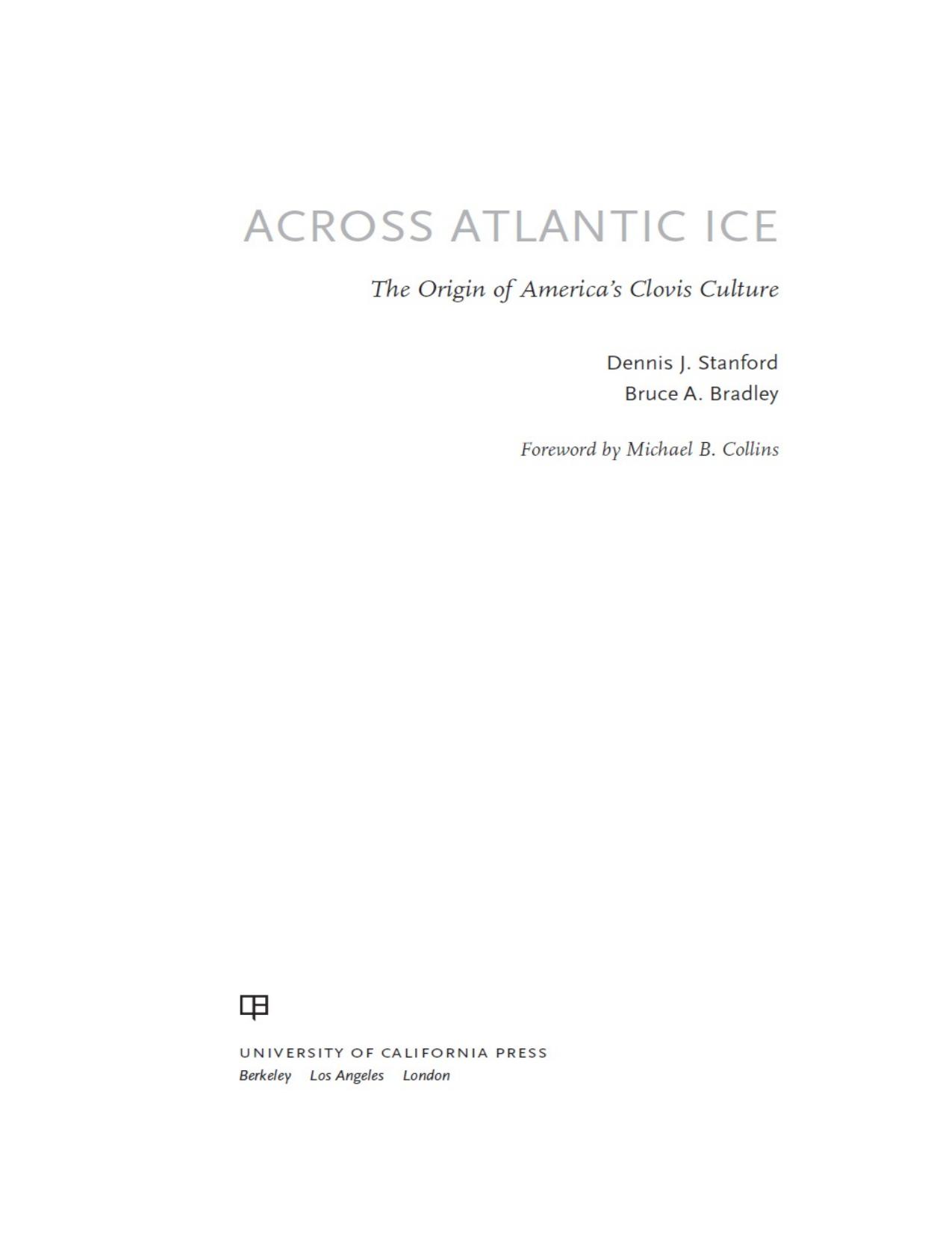Across Atlantic Ice by Dennis J. Stanford & Bruce A. Bradley

Author:Dennis J. Stanford & Bruce A. Bradley
Language: eng
Format: epub, pdf
Publisher: University of California Press
Published: 2012-12-26T16:00:00+00:00
FIGURE 7.3.
Bladelet and blade cores: (a) Solutrean bladelet core; (b-d) pre-Clovis bladelet cores; (e) face and top view of Solutrean polyhedral blade core; (f) face and top view of Clovis polyhedral blade core; (g) face and side view of Solutrean wedge-shaped blade core; (h) face and side view of Clovis wedge-shaped blade core.
The Solutrean is the only assemblage in Upper Paleolithic southwestern Europe with precores prepared with single bifacial ridges and flat, often unmodified backs. The resulting cores regardless of form do not have bifacial back ridges.
Two large blade production strategies were shared by Solutrean, pre-Clovis, and Clovis knappers, resulting in different core types: wedge-shaped and conical. Conical cores have a single platform and unidirectional blade removals (figure 7.3d–f). Wedge-shaped cores have a single primary platform and mostly unidirectional blade removals (figure 7.3g–h). Occasionally a blade would be struck from their distal end, but this seems to have been done to correct flaking errors rather than systematically to produce the desired blades. Intentional bi-directional flaking from opposed platforms occurs in some Solutrean assemblages. This technique was also common in earlier and later technologies in Eurasia; however, Solutrean cores are the only ones with flat backs.
The wedge-shaped cores in Clovis sites were produced with the same techniques as the Solutrean cores and are unlike those made by any of the cultures in Beringia or any other European Upper Paleolithic culture. The technology of the conical blade core forms in Clovis has been reconstructed in detail, and these forms resemble Solutrean examples and some blade cores in sites less than 13,000 years old in the Russian Far East and Alaska.4
Our knapping experience with unidirectional blade technologies indicates that many of the blades they produce are slightly to moderately curved, well suited to the production of the scrapers and other unifacial blade tools found in Solutrean, pre-Clovis, and Clovis assemblages.
Download
Across Atlantic Ice by Dennis J. Stanford & Bruce A. Bradley.pdf
This site does not store any files on its server. We only index and link to content provided by other sites. Please contact the content providers to delete copyright contents if any and email us, we'll remove relevant links or contents immediately.
| Anatomy | Animals |
| Bacteriology | Biochemistry |
| Bioelectricity | Bioinformatics |
| Biology | Biophysics |
| Biotechnology | Botany |
| Ecology | Genetics |
| Paleontology | Plants |
| Taxonomic Classification | Zoology |
Sapiens: A Brief History of Humankind by Yuval Noah Harari(14252)
The Tidewater Tales by John Barth(12608)
Mastermind: How to Think Like Sherlock Holmes by Maria Konnikova(7227)
Do No Harm Stories of Life, Death and Brain Surgery by Henry Marsh(6891)
The Thirst by Nesbo Jo(6828)
Why We Sleep: Unlocking the Power of Sleep and Dreams by Matthew Walker(6618)
Life 3.0: Being Human in the Age of Artificial Intelligence by Tegmark Max(5474)
Sapiens by Yuval Noah Harari(5294)
The Longevity Diet by Valter Longo(5021)
The Body: A Guide for Occupants by Bill Bryson(4974)
The Rules Do Not Apply by Ariel Levy(4861)
The Immortal Life of Henrietta Lacks by Rebecca Skloot(4525)
Animal Frequency by Melissa Alvarez(4395)
Why We Sleep by Matthew Walker(4360)
The Hacking of the American Mind by Robert H. Lustig(4318)
Yoga Anatomy by Kaminoff Leslie(4306)
All Creatures Great and Small by James Herriot(4233)
Double Down (Diary of a Wimpy Kid Book 11) by Jeff Kinney(4207)
Barron's AP Biology by Goldberg M.S. Deborah T(4098)
